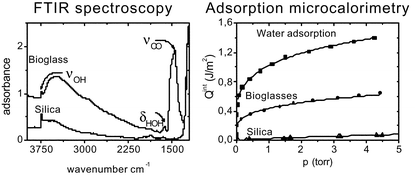Characterization of sol–gel bioglasses with the use of simple model systems: a surface-chemistry approach
Abstract
The present work deals with the physico-chemical characterization of the surface features of two powdery sol–gel-synthesized bioglass specimens (58S and 77S) employed in repair of human bones and soft tissues. In-situ transmission


 Please wait while we load your content...
Please wait while we load your content...